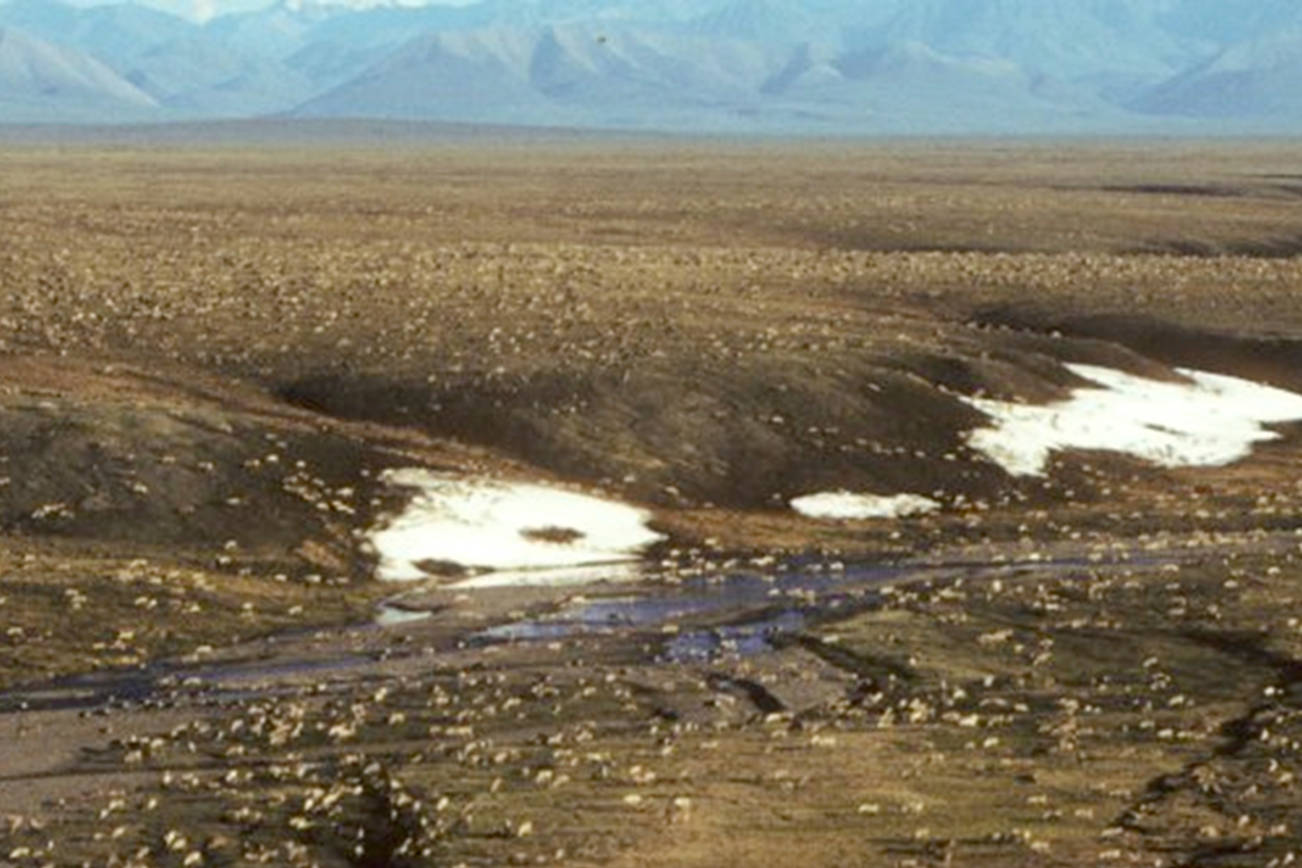On Monday, Feb. 11, I had the privilege of watching democracy in action, right here in Anchorage. The draft Environmental Impact Statement (DEIS) for the Arctic National Wildlife Reserve (ANWR) was released, and public comments were taken at the Dena’ina Center in Anchorage. The Bureau of Land Management (BLM) furnished us with maps of the different development scenarios, impacts on the indigenous people and animal species, and a strong education on the process. Hats off to the agency for sitting through six straight hours of public comment by stakeholders from both inside as well as outside of the protected region, with a wide spectrum of coherence.
Many of the comments were spot on, but many others diverged widely from the scope of the report. I was struck by a conspicuous lack of discourse on the specific threats that development poses to the Porcupine Caribou Herd, which is central to the controversy surrounding the development of ANWR. Despite its minimal appearance in the public comment period, the actual DEIS addressed this issue very well.
However, opponents of the leasing program did not allow a lack of education on the issue to stand in the way of holding the microphone hostage. They used the airwaves to discuss many issues, one common thread being the potential greenhouse gas emissions. One activist was bold enough to implore the BLM to consider the carbon created during the end use of the hydrocarbons.
Of course, had this activist read the DEIS, they would find that use-phase CO2 impacts were actually addressed very well. I thought it would be interesting to provide a bit of color and more technical detail around this hot subject.
The draft report recognizes (correctly) that additional upstream hydrocarbon development does not have a one-for-one impact on oil and gas demand. Developing ANWR to its full potential will not actually add 390 thousand barrels per day to the world’s oil consumption. It will almost displace that much oil already on the market, and then add a fraction of that as a result of bringing the price down. Between the direct emissions generated by the development itself and the indirect emissions generated by the modest increase in global demand, the report ultimately arrives at the conclusion that ANWR development would increase global emissions by between 0.76 and 5.38 million metric tons of CO2 over the field life. This is 11 to 77 thousand metric tons per year, or about 0.5 kilograms per barrel produced.
It’s hard to picture what this means in real life, so in context — the average barrel of North Slope crude oil produces 564 kilograms of CO2 throughout its life. Augmenting this by 0.5 kilograms for the barrels produced by the ANWR development is a 0.1 percent increase.
If anything, the report was too fair. Alaska North Slope (ANS) crude is typically refined in California, meaning that ANWR development is likely to offset declining California barrels as a refinery feedstock. California, despite its green image, produces the dirtiest crude in the nation at 725 kilograms of CO2 per barrel2. With this in mind, we are likely offsetting dirtier crude with cleaner crude, should we develop ANWR.
The reality is that the North Slope has a legacy of environmental responsibility that shines among the prolific oilfields in the world. This great corporate citizenship is not being left behind in the age of climate change. BP recently announced the purchase of 9.3 million metric tons of carbon offsets from Ahtna. My employer, ASRC Energy Services, has seen a strong trend of clients asking for greenhouse gas (GHG) reduction solutions. It’s an exciting time to be a part of a changing industry.
The GHG impact of ANWR development pales in comparison with the potential in demand reduction. People who care about climate change should work to change their habits. Boeing 737s make an astonishing 11 metric tons of CO2 for a short 575-mile flight [European CORINAIR manual (2001)]. An electric vehicle can take 4.5 metric tons of CO2 per year out of the atmosphere. Tesla therefore sold enough cars in 2018 to solve the worst-case ANWR carbon emissions scenario eleven times over. People can truly impact GHG emissions on the demand side, by changes in their everyday life.
To conclude — carbon emissions may be the defining issue of the decade, but they are far from the most important issue related to ANWR development. We will continue to develop and produce oil on the North Slope with world-class corporate responsibility, and drive hard toward a low-carbon future.
Proponents of ANWR leasing are open to constructive input on responsible development scenarios. This should be seen as an unprecedented opportunity to collaborate between industry, regional stakeholders, and concerned Americans to reach a plan that benefits everyone. People engaging in the process would be advised to learn more about the issues, the proposal and the process itself. In this way, the discussion can be elevated and constructive outcomes achieved.
I want to again thank the BLM for a great presentation, an excellent report (which was delivered through a government shutdown), and for great patience shown throughout these hearings. I hope the conversation in the future can remain focused on the relevant elements, such as the impact on coastal plain wildlife. Finally, I hope that the needs and wishes of the regional stakeholders are met, especially the Iñupiat people of the village of Kaktovik, as they have the greatest at stake.
Liam Zsolt is the Director of Technology at ASRC Energy Services.


